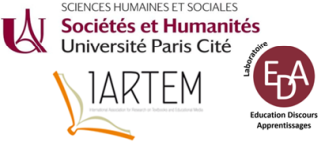The worked-out examples in expository tasks in mathematics textbooks are tools that are made available to provide guidance and sequences of reasoning that could be used to derive solutions in subsequent exercises. However, these guiding tools should be presented with the intent to provoke learners' creative mathematical reasoning, instead of learning by imitating the solution templates presented in expository tasks. In this paper, we contend that mathematics is learned meaningfully when reasoning and proof-related activities (R&P) are made available to learn. Moreover, we posit these activities; pattern identification, making conjectures, providing proof and nonproof arguments, and evaluating arguments should be made available in textbooks in a manner that encourages “productive struggle''. That is, exercise tasks should not be solved by directly referring to the solution templates in expository tasks. Instead, the solution template should be used as a thinking tool to produce plausible, and evidence of novelty in arguments that shape the solution process in exercise tasks. Lithner (2017) defines this process by distinguishing imitative and creative mathematical reasoning. Creative mathematical reasoning refers to the exposure to sequences of reasoning that have not been encountered before (Silver, 1997 cited in Lithner, 2017). While imitative reasoning is defined when worked-out examples, together with their sequence of reasoning are used directly to solve exercise tasks (Lithner, 2017). Although this distinction is not elaborated on in this paper, it forms part of the bedrock of the framing of the levels of relatedness between textbook tasks which are of concern to this paper.
A shred of evidence exists in the literature that reasoning and proof-related activities should be part of the everyday teaching and learning of mathematics across all grades (i.e., Fu et al., 2022; Zhang & Qi, 2019). Moreover, curriculums (i.e., Department of Basic Education [DBE], 2011) and professional bodies in education (i.e., National Council of Teachers of Mathematics [NCTM], 2000) contest that these activities should be fostered in curriculum resources such as textbooks and during enactment in the classroom. Regardless of these contestations, to date, research studies show that tenets of reasoning and proofing are not adequately presented in mathematics textbooks, and in the mathematics classroom (i.e., Fu et al., 2022; Zhang & Qi, 2019). Contrary to these findings, anecdotal evidence in the same studies shows that the tenets of reasoning and proof-related activities are slightly prioritised in geometry as compared to other topics in mathematics textbooks. However, it was apparent that the extent to which expository tasks and exercise tasks are related remains in the background. In other words, the extent to which imitative and creative mathematical reasoning is fostered through the tenets of R&P in expository tasks and exercise tasks is not yet explored. This paper, therefore, seeks to contribute to the body of knowledge in the field of reasoning and proving in mathematics textbooks by providing an insightful interrogation of the levels of relatedness between textbook expository and exercise tasks bearing tenets of R&P. We hope that this study would provide knowledge that could be used when curriculum resources, particularly in Euclidian geometry are developed in the future.
The following research questions are subject to this paper; What is the level of relatedness between expository and exercise tasks bearing tenets of R&P on the topic of Euclidian geometry in a Grade ten mathematics textbook?
What do the identified levels of relatedness amid textbook tasks bearing tenets of R&P suggest for opportunities to learn creative mathematical reasoning in Euclidian geometry?
To answer these research questions, a dyadic analytical framework of R&P-LR was used. This framework was established by merging two frameworks, the framework of tenets of R&P by Zhang and Qi (2019) and the framework of the levels of relatedness by Jader et al. (2020). A qualitative approach and textbook content analysis methods were used. In conducting the data analysis, three mathematics assistant researchers were consulted as a part of the quality criteria of data analysis. One mathematics textbook that is approved according to the standards of the curriculum was randomly sampled amongst textbooks that are used in public schools in South Africa. The preliminary results show that the prominent level of relatedness that surfaced between the textbook tasks was “global low relatedness”. In other words, the exercise tasks could not be solved by directly referring to solution templates in expository tasks.
Keywords: Productive struggle, tenets of reasoning-and-proving, levels of relatedness, imitative and creative mathematical reasoning.
Reference
Department of Basic Education. (2011). Curriculum Assessment Policy Statement grades 10 to 12 Mathematics. Pretoria Department of Basic Education.
Fu, Y., Qi, C., & Wang, J. (2022). Reasoning and proof in algebra: the case of three reform-oriented textbooks in China. Canadian Journal of Science, Mathematics and Technology Education, 22(1), 130-149.
Jader, J., Lithner, J., Sidenvall. (2020). Mathematical problem-solving in textbooks from twelve countries. International Journal of Mathematical Education in Science and Technology, 51(7), 1120-1136.
Lithner, J. (2017). Principles for designing mathematical tasks that enhance imitative and creative reasoning. Zdm, 49(6), 937-949.
Zhang, D., Qi, C. (2019). Reasoning and poof in eighth-grade mathematics textbooks in China. International Journal of Education Research, 98(2010), 77-90.
- Poster

 PDF version
PDF version

